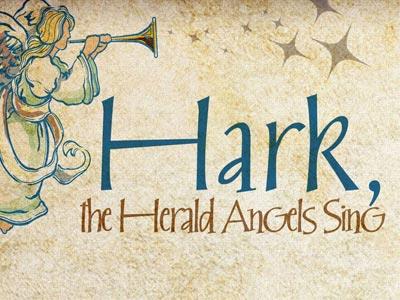-
The Fullness Of Time.
Contributed by Gordon Mcculloch on Nov 28, 2017 (message contributor)
Summary: Summary: As a New Year starts, where has all the time gone, but more importantly what is in front of us. Can the simple dates of the Lords birth give us hope. Let us see!
This sermon was delivered to St Oswald’s in Maybole,
Ayrshire, Scotland on the 1st January 2012
(a Scottish Episcopal Church in the Dioceses of Glasgow and Dumfries).
Summary: As a New Year starts, where has all the time gone, but more importantly what is in front of us. Can the simple dates of the Lords birth give us hope. Let us see!
Numbers 6:22-27 Galatians 4:4-7 Luke 2:15-21 Psalm 8
Welcome
Grace and peace to you from God our Father and the Lord Jesus Christ. Amen.
2011 has come and gone. I hope it was a good year for you all; but I am sure you had your share of troubles the same as everyone else. Today the theme of our service is "Time" as we look at the dates of the Lords birth and what was happening at the time to see how these simple chain of events give us hope for the future. But more on that Later; for now we will start with the peace.
We meet in Christ's name. Let us share his peace.
The New Testament Reading.
Our New Testament reading is from the book of Galatians Chapter 4 verses 4 to 7.
When the fullness of time had come, God sent his Son, born of a woman, born under the law, in order to redeem those who were under the law, so that we might receive adoption as children. And because you are children, God has sent the Spirit of his Son into our hearts, crying, "Abba! Father!" So you are no longer a slave but a child, and if a child then also an heir, through God.
For the word of the Lord: Thanks be to God.
“Please be seated, and join me in a short prayer.” Let the words of my mouth, and the meditation of our hearts, be acceptable in your sight, O Lord. Amen. (Ps. 19:14)
Introduction
In today’s New Testament reading we hear the apostle Paul say “But when the fullness time had come, God sent his Son, born of a woman, born under the law, in order to redeem those who were under the law, so that we might obtain adoption as sons”
This is a very complex and powerful verse, a verse I cannot do just in one sermon, so I will concentrate on the first seven words which are “when the fullness time had come”.
Today’s sermon is about time, well more specific, the fullness of God’s time; and when we read the fullness of time, we do not refer to the expression commonly used by Politicians to avoid answering questions or deflecting an answer, but an expression to show that everything that God has planned, has been executed and is complete in full.
Indeed, the noun ‘fullness’ carries the image a container of sorts, filled to the brim, with fullness suggesting nothing further to be added; and so it was with our redemption: (our being made right with God); which was all planned and executed in Jesus, and was made complete when he died on that cross.
The coming of Jesus was set in the context of God’s dealings with Israel, where the hopes of what we call the Old Testament, was about to be fulfilled.
It was also planned to be set in the context of the Roman Empire, where the Gospel would be communicated through its many travel routes.
The coming of Jesus was therefore a very decisive moment in time and it changed history forever. It was not a visitation by a prophet, or an angel or a seer; but a visitation by God incarnate, (in flesh and blood).
Jesus is therefore the human face of God, a face which reflects his Fathers love through grace and mercy, and a face that leads us directly to the Father. But you know all that.
And so we can agree that Jesus was conceived, born, lived, died and was resurrected in that order; so the Incarnation on its own is not an isolated historical event. Neither is the crucifixion nor resurrection; but together within themselves, they hold God’s eternal redemptive plan, total and eternal, with the word fullness in there somewhere.
The world focuses time in a chronological order with one thing following another, and we do as well or we would not survive; however we Episcopalians like many other denominations, also measure time in relation to the life of Christ and our redemption.
For example, we are living in the year of our Lord, the 1st January 2012. We split the year up into the different segments of Christ’s life: we start with advent, and then we move onto Christmas where we celebrate his birth. Next comes Epiphany and then onto “Ordinary Time” or as we call it, the “time after Epiphany”, where we focus on the manifestation of Christ's divinity.

 Sermon Central
Sermon Central



